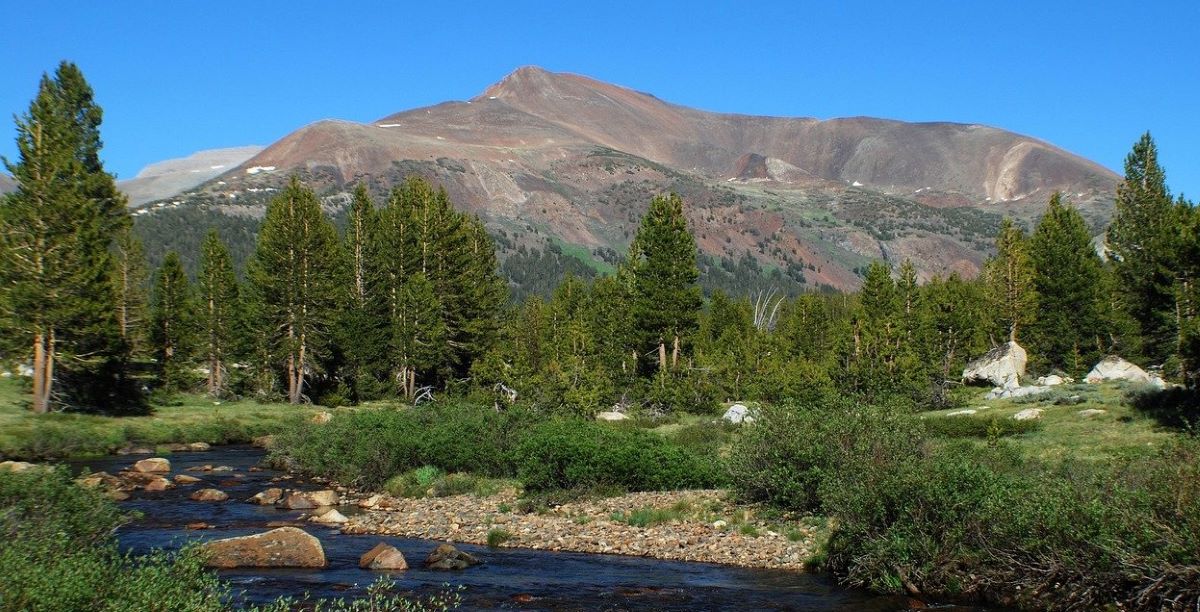Climate change and megafloods …
If not by drought then by megaflood: Climate change may have doubled risk of disastrous flooding in California

“In drought-ridden California’s history, megafloods have occurred about every century. Not often, but from a geological standpoint they’re not rare. The most notable megaflood in recent history, the Great Flood of 1862, came after a 20-year drought. One of the costliest natural disasters to hit the disaster-prone state, the flood caused $100 million in damages, equal to $3.11 billion today. The 1862 megaflood occurred not as the result of a single storm, but weeks of continuous rain and heavy snow in the Sierra. It culminated in a warm intense monster of a storm that melted all the snow that had fallen in the prior weeks. The resulting flood turned the Central Valley into an inland sea up to 30 feet deep and 4,000 people — 1% of the state’s population at the time — lost their lives. ... ” Read more from the Courthouse News here: If not by drought then by megaflood: Climate change may have doubled risk of disastrous flooding in California
Risk of catastrophic California ‘megaflood’ has doubled due to global warming, researchers say
“Even today, as California struggles with severe drought, global warming has doubled the likelihood that weather conditions will unleash a deluge as devastating as the Great Flood of 1862, according to a UCLA study released Friday. In that inundation 160 years ago, 30 consecutive days of rain triggered monster flooding that roared across much of the state and changed the course of the Los Angeles River, relocating its mouth from Venice to Long Beach. If a similar storm were to happen today, the study says, up to 10 million people would be displaced, major interstate freeways such as Interstates 5 and 80 would be shut down for months, and population centers including Stockton, Fresno and parts of Los Angeles would be submerged — a $1-trillion disaster larger than any in world history. … ” Read more from the LA Times here: Risk of catastrophic California ‘megaflood’ has doubled due to global warming, researchers say
SEE ALSO:
- ARkStorm 2.0: Climate change is increasing the risk of a California megaflood, from Dr. Daniel Swain at Weather West
- A disastrous megaflood is coming to California, experts say, and it could be the most expensive natural disaster in history, from CNN
- The coming California megastorm, interactive from the New York Times
Newsom’s water strategy …
Newsom’s new water strategy: ‘bold and comprehensive’
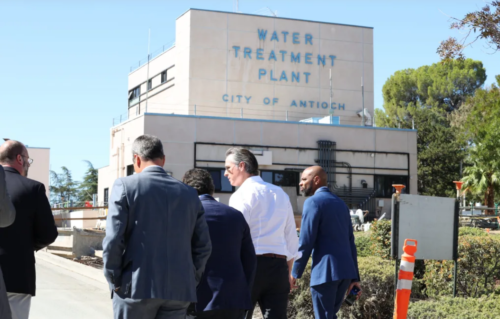 “Governor Gavin Newsom unveiled a new water strategy for California to address drought conditions created by extreme weather patterns. The plan outlined in California’s Water Supply Strategy, Adapting to a Hotter, Drier Future places an emphasis on water capture, recycling, desalination, and conservation. Several agricultural groups have commended the announcement, describing it as an important step for stabilizing California’s water supplies. “Today’s announcement provides the support necessary for additional above and below ground storage, water recycling, and critically needed infrastructure. We need the ability to better capture wet year water, convey it, and store it for dry years,” California Citrus Mutual President and CEO, Casey Creamer said in a press release. ... ” Read more from Ag Net West here: Newsom’s new water strategy: ‘bold and comprehensive’
“Governor Gavin Newsom unveiled a new water strategy for California to address drought conditions created by extreme weather patterns. The plan outlined in California’s Water Supply Strategy, Adapting to a Hotter, Drier Future places an emphasis on water capture, recycling, desalination, and conservation. Several agricultural groups have commended the announcement, describing it as an important step for stabilizing California’s water supplies. “Today’s announcement provides the support necessary for additional above and below ground storage, water recycling, and critically needed infrastructure. We need the ability to better capture wet year water, convey it, and store it for dry years,” California Citrus Mutual President and CEO, Casey Creamer said in a press release. ... ” Read more from Ag Net West here: Newsom’s new water strategy: ‘bold and comprehensive’
California drought plan outlines billions in water infrastructure
“California Gov. Gavin Newsom unveiled a sweeping new water strategy for the state that calls for more than $8 billion in state investments to shore up the dwindling resource. According to the document, the state faces the loss of 10% of its water supply by 2040. The plan outlines a strategy to capture, recycle, desalinate and conserve more water over the next two decades to provide enough supply for nearly 8.4 million households. “The best science tells us that we need to act now to adapt to California’s water future. Climate change means drought won’t just stick around for two years at a time like it historically has—extreme weather is a permanent fixture here in the American West and California will adapt to this new reality,” Newsom said. … ” Read more from Engineering News-Record here: California drought plan outlines billions in water infrastructure
Newsom pushes desalination as California dries out
“In anticipation of California losing 10% of its water supply by 2040, Gov. Gavin Newsom and state water officials unveiled a multi-pronged plan Thursday to adapt to hotter conditions and bolster the Golden State’s water supply in the coming years. The 16-page plan outlines goals to target the state’s water supply by developing additional space to capture and store water, diversifying the state’s water portfolio through desalination and reducing water demand. The plan also underlines the importance of accelerating the modernization of California’s water system to replenish the water California will lose due to hotter and drier seasons. ... ” Continue reading at the Santa Barbara Independent here: Newsom pushes desalination as California dries out
Restore the Delta on Governor Newsom’s “hotter, drier” water supply strategy
“We got the news early Thursday when the Los Angeles Times reported that Governor Gavin Newsom had released a plan to deal with California’s aridification. Might be a new approach! Newsom, however, did not anticipate the same day the institutional death of 21,000 captive fish under study at the University of California, Davis. … In light of the news out of Davis, however, we quickly realized Newsom’s hype is merely for a campaign document, and that Newsom’s appearance with Antioch’s brackish-water desalination plant as backdrop was a chance for him to shift the narrative about water and drought in California—just with 21,000 fish corpses at his metaphorical feet. … ” Read the full post from Restore the Delta here: Restore the Delta on Governor Newsom’s “hotter, drier” water supply strategy
Governor Newsom makes a big water announcement
“As regular readers of this newsletter know, Milk Producers Council was a strong supporter of the More Water Now initiative effort conducted late last year…. The effort to get 1 million signatures to qualify the initiative for the ballot was not successful, but Edward Ring, the main organizer of the effort, published a book on the experience entitled “The Abundance Choice: Our Fight for More Water in California.” Yesterday, Governor Newsom held a press conference in Antioch, California at the construction site of a desalination plant to outline a new plan to invest in increased water supply for California. The Governor pointed out that so much of our conversation about water has been from a water conservation mind set and that needs to change, “moving away from a scarcity mindset to one more of abundance.”… ” Read more from the Milk Producers Council here: Governor Newsom makes a big water announcement
In other California water news this weekend …
Could virtual networks solve drinking water woes for California’s isolated, disadvantaged communities?
“A pilot program in the Salinas Valley run remotely out of Los Angeles is offering a test case for how California could provide clean drinking water for isolated rural communities plagued by contaminated groundwater that lack the financial means or expertise to connect to a larger water system. The high-tech system developed by the University of California, Los Angeles removes common contaminants from groundwater, allowing residents of a cluster of Salinas Valley disadvantaged communities to finally turn on their taps without fear. UCLA’s smart systems are smaller and cheaper to implement than traditional water treatment plants and can be operated via smartphone or tablet by an expert located hundreds of miles away. … ” Read more from Western Water here: Could virtual networks solve drinking water woes for California’s isolated, disadvantaged communities?
Drought takes toll on Northern California rice fields
“A loping breeze tugged and pulled at the straw colored weeds, the only things in motion in Donald Bransford’s drought-stricken fields in Colusa County, which this time of year would normally be carpeted with a verdant green blanket of rice shoots. “I’ve been farming since 1980,” Bransford said surveying the dirt plain. “I’ve had a rice crop every year except for this year.” Bransford and other rice farmers working the rice belt on the west side of the Sacramento Valley have survived other years of drought, continuing to farm even when state and federal regulators reduced water deliveries for lack of rain. But this year, the drought has plowed into new territory. … ” Read more from NBC Bay Area here: Drought takes toll on Northern California rice fields
Spaghetti sauce is under threat as water crisis slams tomatoes
 “Tomatoes are getting squeezed. California leads the world in production of processing tomatoes — the variety that gets canned and used in commercial kitchens to make some of the most popular foods. The problem is the worst drought in 1,200 years is forcing farmers to grapple with a water crisis that’s undermining the crop, threatening to further push up prices from salsa to spaghetti sauce. ... ” Read more from Bloomberg here: Spaghetti sauce is under threat as water crisis slams tomatoes | Read via Yahoo News
“Tomatoes are getting squeezed. California leads the world in production of processing tomatoes — the variety that gets canned and used in commercial kitchens to make some of the most popular foods. The problem is the worst drought in 1,200 years is forcing farmers to grapple with a water crisis that’s undermining the crop, threatening to further push up prices from salsa to spaghetti sauce. ... ” Read more from Bloomberg here: Spaghetti sauce is under threat as water crisis slams tomatoes | Read via Yahoo News
Pipe dream or possible? Experts weigh in on idea of sending Mississippi River water to West
“Two hundred miles north of New Orleans, in the heart of swampy Cajun country, the U.S. Army Corps of Engineers in 1963 cut a rogue arm of the Mississippi River in half with giant levees to keep the main river intact and flowing to the Gulf of Mexico. The Old River Control Structure, as it was dubbed, is also the linchpin of massive but delicate locks and pulsed flows that feed the largest bottomland hardwood forests and wetlands in the United States, outstripping Florida’s better known Okefenokee Swamp. … This summer, as seven states and Mexico push to meet a Tuesday deadline to agree on plans to shore up the Colorado River and its shriveling reservoirs, retired engineer Don Siefkes of San Leandro, California, wrote a letter to The Desert Sun with what he said was a solution to the West’s water woes: build an aqueduct from the Old River Control Structure to Lake Powell, 1,489 miles west, to refill the Colorado River system with Mississippi River water. ... ” Read more from the Desert Sun here: Pipe dream or possible? Experts weigh in on idea of sending Mississippi River water to West | Read via Yahoo News
California could lend PG&E $1.4 billion to save Diablo Canyon nuclear plant
“A last-minute proposal from Gov. Gavin Newsom could keep the Diablo Canyon nuclear plant open through 2035, a decade beyond its current closure date — in part by giving owner Pacific Gas & Electric Co. a $1.4-billion forgivable loan. The proposal is part of draft legislative language distributed to state lawmakers late Thursday night. The bill, which has yet to be introduced in the Legislature, would also exempt the Diablo Canyon extension from the California Environmental Quality Act and several other environmental rules that nuclear opponents might otherwise use to challenge the extension. … ” Read more from the LA Times here: California could lend PG&E $1.4 billion to save Diablo Canyon nuclear plant
NASA Earth Observatory: Death Valley flash flooding
“In early August 2022, flash floods soaked Furnace Creek in Death Valley, the driest place in North America. In just three hours on August 5, a thousand-year rainfall event dropped 75 percent of the local average annual rainfall, which is just under 2 inches (5 centimeters). Flood water washed debris over roads, swept away and buried cars, knocked a water facility offline, damaged buildings, and stranded about a thousand visitors and staff in Death Valley National Park. The deluge dropped 1.46 inches (3.7 centimeters), which came close to breaking the single-day record for highest rainfall ever received in the park, which was 1.47 inches in April 1988. It did, however, break the record for the most rain recorded in August, which averages just over a tenth of an inch for the whole month. … ” Read more from NASA’s Earth Observatory here: NASA Earth Observatory: Death Valley flash flooding
California’s vital ocean current will soon see major disruption. Here’s what’s at stake
“Enormous disruption is predicted for the the California Current marine ecosystem, which runs the length of the West Coast and is considered one of the most rich and abundant ocean regions in the world. With human-caused climate change, some of the most important species that live in that zone will experience major changes by the end of the century, in some cases facing a 25% lower chance of survival, a new study found. “Everything from plankton and seaweeds to fish and marine mammals and birds, all of that is dependent on the health or condition of the California Current system,” said Terrie Klinger, a coauthor of the study at the University of Washington. … ” Read more from the San Francisco Chronicle here: California’s vital ocean current will soon see major disruption. Here’s what’s at stake
In commentary this weekend …
Delta Conveyance Project: Time to start moving dirt and stop throwing mud
Brett Barbre, former member of the board of directors of the Metropolitan Water District of Southern California, the Municipal Water District of Orange County, and the Yorba Linda Water District, writes, “The window may be closing on the Delta Conveyance Project as California slowly slides back to the stone age, while blaming everyone and everything except the organizations and individuals who have perfected the policy of paralysis by analysis. … Roughly 30 percent of those water supplies are utilized in the Central Valley to grow food, and nearly 70 percent is consumed for residential, municipal, and industrial uses in the Silicon Valley and southern California.That’s why the Delta Conveyance Project, which would build a tunnel below the Delta to bring fresh water to the pumps in the southern portion of the estuary, must be built. It’s long overdue. … ” Read the full commentary at the Epoch Times here (free registration may be required): Delta Conveyance Project: Time to start moving dirt and stop throwing mud
It’s raining fish: Animal oddities might have a message for California’s humans
“A month ago, I took a walk through the edge of San Francisco’s Golden Gate Park. I was off the main road, on a dirt and gravel trail. So it was strange to look ahead and see that fish were blocking my path. Yes, at least a dozen small, silvery fish — most of them completely intact, looking as if they had been recently alive — were scattered along the trail and in nearby bushes. I immediately assumed the worst, thinking this must be a sign of some human-caused catastrophe (a symptom of climate change, perhaps). But I was wrong. … ” Continue reading at the Sacramento Bee here: It’s raining fish: Animal oddities might have a message for California’s humans
In people news this weekend …
Governor Newsom names Amelia Yana Garcia Gonzalez new Secretary for Environmental Protection as Secretary Jared Blumenfeld steps down
“Governor Gavin Newsom today announced that Amelia Yana Garcia Gonzalez will serve as California’s next Secretary for Environmental Protection after Secretary Jared Blumenfeld steps down in September. Garcia Gonzalez previously served in various leadership roles at CalEPA focused on environmental justice and tribal affairs. “Yana’s deep connection to communities, her strong track record as an environmental attorney in holding polluters accountable, and her commitment to bringing diverse interests together make her uniquely matched to the challenges facing California,” said Governor Newsom. “She is a strategic and compassionate leader who played a central role in helping communities gain access to safe and affordable drinking water. Yana is known nationally as a groundbreaking environmentalist who has lifted up the voices of tribal nations, U.S.-Mexico border communities, and those struggling on the frontlines of the battle for environmental justice. I look forward to working with Yana to implement our ambitious environmental agenda with the knowledge that she is resolute in her commitment to ensuring a California for all.” … ” Continue reading this press release from the Office of the Governor here: Governor Newsom names Amelia Yana Garcia Gonzalez new Secretary for Environmental Protection as Secretary Jared Blumenfeld steps down
Jared Blumenfeld leaving state government
 “Jared Blumenfeld, California’s top environmental regulator and a key climate adviser to Gov. Gavin Newsom, will leave the administration at the end of the month, Newsom announced Friday. Newsom, a Democrat, appointed Blumenfeld as secretary of the California Environmental Protection Agency on his first day in office in 2019. Blumenfeld will become president of the Waverley Street Foundation, a $3 billion climate initiative funded by Laurene Powell Jobs. As head of the state’s environmental agency, he was responsible for departments that regulate air pollution, water use, recycling, toxic substances, pesticides, environmental health hazards like extreme heat. … ” Read more from the AP here: Jared Blumenfeld leaving state government
“Jared Blumenfeld, California’s top environmental regulator and a key climate adviser to Gov. Gavin Newsom, will leave the administration at the end of the month, Newsom announced Friday. Newsom, a Democrat, appointed Blumenfeld as secretary of the California Environmental Protection Agency on his first day in office in 2019. Blumenfeld will become president of the Waverley Street Foundation, a $3 billion climate initiative funded by Laurene Powell Jobs. As head of the state’s environmental agency, he was responsible for departments that regulate air pollution, water use, recycling, toxic substances, pesticides, environmental health hazards like extreme heat. … ” Read more from the AP here: Jared Blumenfeld leaving state government
SEE ALSO: California’s top environmental regulator leaves to join ‘one of the biggest climate funds in the world’, from the San Francisco Chronicle
Peter Moyle: Fish by fish, bird by bird
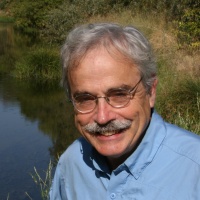 “Peter Moyle is widely considered the “godfather of California fish biology.” The UC Davis professor emeritus has been conducting native fish surveys here for more than 50 years. He also played a major role in restoring Yolo County’s beloved local stream, Putah Creek. His work sounded alarm bells about native fish, including the endangered Delta smelt — a nearly extinct icon of California’s water woes. Unfortunately, the bells keep ringing: 80% of native fish have declined in the state since he first began studying them. Despite the sad fish tales, he appears to be quite happy, with a natural glint in his eye, a resting half smile on his face and a warmth that draws both fish and people to him. I sat with him on a warm winter day along the UC Davis Arboretum waterway to learn how he’s kept climate despair at bay while he’s continued, Lorax-style, to speak for the fish. … ” Read more from UC Davis here: Peter Moyle: Fish by fish, bird by bird
“Peter Moyle is widely considered the “godfather of California fish biology.” The UC Davis professor emeritus has been conducting native fish surveys here for more than 50 years. He also played a major role in restoring Yolo County’s beloved local stream, Putah Creek. His work sounded alarm bells about native fish, including the endangered Delta smelt — a nearly extinct icon of California’s water woes. Unfortunately, the bells keep ringing: 80% of native fish have declined in the state since he first began studying them. Despite the sad fish tales, he appears to be quite happy, with a natural glint in his eye, a resting half smile on his face and a warmth that draws both fish and people to him. I sat with him on a warm winter day along the UC Davis Arboretum waterway to learn how he’s kept climate despair at bay while he’s continued, Lorax-style, to speak for the fish. … ” Read more from UC Davis here: Peter Moyle: Fish by fish, bird by bird
Zone 7 selects Palmer as new board president
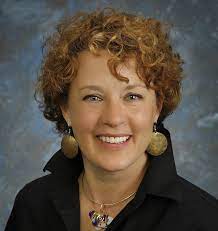 “Zone 7 Water Agency Director Sarah Palmer was chosen as the new president of the agency’s Board of Directors during an annual reorganization meeting late last month. The Livermore resident, who was re-elected to a fifth term on the board in the June primary, will now oversee the appointment of committees and will be responsible for interpreting the policies, programs and needs of the agency to the public. “Zone 7 and all water agencies across our state face both interesting and difficult challenges with drought, climate change and infrastructure issues to name a few,” Palmer said in a news release. “The Zone 7 board and our capable staff will work together to ensure safe and reliable water for both our urban and agricultural needs.” … ” Read more from Pleasanton Weekly here: Zone 7 selects Palmer as new board president
“Zone 7 Water Agency Director Sarah Palmer was chosen as the new president of the agency’s Board of Directors during an annual reorganization meeting late last month. The Livermore resident, who was re-elected to a fifth term on the board in the June primary, will now oversee the appointment of committees and will be responsible for interpreting the policies, programs and needs of the agency to the public. “Zone 7 and all water agencies across our state face both interesting and difficult challenges with drought, climate change and infrastructure issues to name a few,” Palmer said in a news release. “The Zone 7 board and our capable staff will work together to ensure safe and reliable water for both our urban and agricultural needs.” … ” Read more from Pleasanton Weekly here: Zone 7 selects Palmer as new board president
Passages …
Anthony Saracino
 “Anthony had a remarkable career and developed many deep friendships along the way. He was an intelligent, inquisitive, and savvy person who had excellent judgment and business sense. He was a widely-recognized expert in California water policy. He co-authored various publications on groundwater management, reservoir reoperation, and integrating storage in California’s changing water system. He was a founding member of the board and past president of the Groundwater Resources Association of California and served on the board of the Water Education Foundation for 15 years. Anthony was appointed in both federal and state courts as a groundwater expert. He was a member of the California Water Commission from 2010 to 2015, having been appointed by both Governors Schwarzenegger and Brown, and served as Chair of the Commission for the first two years of his term.” Read the full obituary at the Sacramento Bee here: Passages: Anthony Saracino
“Anthony had a remarkable career and developed many deep friendships along the way. He was an intelligent, inquisitive, and savvy person who had excellent judgment and business sense. He was a widely-recognized expert in California water policy. He co-authored various publications on groundwater management, reservoir reoperation, and integrating storage in California’s changing water system. He was a founding member of the board and past president of the Groundwater Resources Association of California and served on the board of the Water Education Foundation for 15 years. Anthony was appointed in both federal and state courts as a groundwater expert. He was a member of the California Water Commission from 2010 to 2015, having been appointed by both Governors Schwarzenegger and Brown, and served as Chair of the Commission for the first two years of his term.” Read the full obituary at the Sacramento Bee here: Passages: Anthony Saracino
Jim Peasley
 “Padre Dam Municipal Water District’s Board Vice President Jim Peasley passed away Aug. 2. Peasley, 71, served on the District’s Board of Directors for the past 12 years as Board president in 2014 and 2019, vice president in 2013, 2018, and 2022. Peasley was a Blossom Valley resident along with his wife Linda. Peasley had close to 40 years of experience in water, recycled water, and wastewater industries as a Registered Professional Civil Engineer. Prior to joining the Padre Dam Board, he served the water community as an Engineering Manager at Otay Water District. Board President Bill Pommering said it was an honor to work with Peasley for more than a decade in a press release. ... ” Read more from the East County Californian here: Water board vice president dies
“Padre Dam Municipal Water District’s Board Vice President Jim Peasley passed away Aug. 2. Peasley, 71, served on the District’s Board of Directors for the past 12 years as Board president in 2014 and 2019, vice president in 2013, 2018, and 2022. Peasley was a Blossom Valley resident along with his wife Linda. Peasley had close to 40 years of experience in water, recycled water, and wastewater industries as a Registered Professional Civil Engineer. Prior to joining the Padre Dam Board, he served the water community as an Engineering Manager at Otay Water District. Board President Bill Pommering said it was an honor to work with Peasley for more than a decade in a press release. ... ” Read more from the East County Californian here: Water board vice president dies
Podcasts …
ENGINEERING WITH NATURE PODCAST: The San Joaquin Valley: Past, present, and future, from the air
Todd Bridges shares his perspective on the transformation of the wider San Joaquin Valley where he grew up. In December 2021, he took a helicopter tour of the Valley with an eye toward the landscape transformations that are evident. As Todd describes it, “It’s clear to me that today’s and tomorrow’s climate cannot be reconciled with current practices in the valley and its landscape. It’s also clear to me that nature provides a source of hope for the valley’s future. A new balance could be achieved by resurrecting natural features and processes that were ‘engineered out’ of the Valley in the 20th century. Applying the principles and practices of Engineering With Nature could provide the means to realign the social-ecological system for enduring sustainability, water, and social resilience, and to produce the diversity of benefits and values that nature can provide.”
ECONEWS REPORT: Exploring California’s Coasts, With Obi Kaufmann
 Obi Kaufmann, naturalist and best-selling author, joins Gang Green to talk about his new book, The Coasts of California: A California Field Atlas. Like his previous best sellers, The Coasts of California explores the Golden State’s wild places in a way only Obi can, through hundreds of watercolor paintings and maps, woven together with philosophy and lyrical naturalism. Obi also has a new podcast — shameless cross-promotion here — called Place & Purpose, where he and co-host Greg Sarris, Chairman of the Federated Indians of Graton Rancheria, explore deep questions of purpose and belonging. Grab a cup of tea, sit back, and enjoy this far-ranging conversation. Listen at the Lost Coast Outpost here: ECONEWS REPORT: Exploring California’s Coasts, With Obi Kaufmann
Obi Kaufmann, naturalist and best-selling author, joins Gang Green to talk about his new book, The Coasts of California: A California Field Atlas. Like his previous best sellers, The Coasts of California explores the Golden State’s wild places in a way only Obi can, through hundreds of watercolor paintings and maps, woven together with philosophy and lyrical naturalism. Obi also has a new podcast — shameless cross-promotion here — called Place & Purpose, where he and co-host Greg Sarris, Chairman of the Federated Indians of Graton Rancheria, explore deep questions of purpose and belonging. Grab a cup of tea, sit back, and enjoy this far-ranging conversation. Listen at the Lost Coast Outpost here: ECONEWS REPORT: Exploring California’s Coasts, With Obi Kaufmann
WATER IS A MANY SPLENDOR’ED THING PODCAST: Blue Green Algae
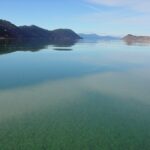 Scott Springer grew up in Chicago and decided to pursue his personal growth in the 1960s by traveling clear across the country to Mt. Shasta, California. It was there that he learned of the benefits of blue green algae that grew from the waters of Klamath Lake, Oregon. Water is a Many Splendor’ed Thing brings you another water relationship that has a personally significant impact to your life. Produced by Steven Baker, Bringing People Together to Solve Water Problems, water@operationunite.co , 530-205-6388
Scott Springer grew up in Chicago and decided to pursue his personal growth in the 1960s by traveling clear across the country to Mt. Shasta, California. It was there that he learned of the benefits of blue green algae that grew from the waters of Klamath Lake, Oregon. Water is a Many Splendor’ed Thing brings you another water relationship that has a personally significant impact to your life. Produced by Steven Baker, Bringing People Together to Solve Water Problems, water@operationunite.co , 530-205-6388
SPEAKING OF WATER PODCAST: Climatologist Curtis Riganti discusses the US Drought Monitor
Curtis Riganti, climatologist at the National Drought Mitigation Center, speaks with Delaney Nelson, Circle of Blue reporting intern, about the latest U.S. Drought Monitor map.
In regional water news this weekend …
NORTH COAST
Local tribe’s prayer journey creates community that cares for rivers, salmon, and each other
Misa Joo, follower of the Winnemem Wintu way of life and Shasta County resident, writes, “The Run4Salmon Prayer Journey held its 7th annual closing ceremony on July 31. The journey is like a whole community traveling down the McCloud and Sacramento Rivers to the estuary and to the ocean. It begins at the alpine spring bubbling from Mt. Shasta, the origin place of the Winnemem Wintu and their old time Nur, the Chinook Salmon. Those who travel on this three-week journey carry a prayer for the return of the plentiful runs of Chinook, which had been stopped cold by the construction of Shasta Dam in 1945. In the construction, there was no plan for ladders or a swim way for the fish to return to spawn again. The dam builders planned for hatchery fish to simply replace the wild Salmon. Only recently, over decades of dwindling salmon numbers, have the scientists realized that hatchery fish are not surviving as a species. … ” Read more from Shasta Scout here: Local tribe’s prayer journey creates community that cares for rivers, salmon, and each other
Humboldt County health officials warn of blue-green algae in Big Lagoon area
“Local Public and Environmental Health officials are warning recreational users of all bodies of fresh water to avoid contact with cyanobacteria (also known as blue-green algae) after samples from Big Lagoon tested high for toxins earlier this week. Benjamin Dolf, a Supervising Environmental Health Specialist with the Humboldt County Department of Health & Human Services Environmental Health Division, said the samples tested in the “danger” zone which comes with very specific guidance. “When the levels meet the danger threshold, it’s important for people, animals and even watercraft to stay out of the body of water until further notice,” he said, adding that resampling is scheduled to take place at the lagoon in the next week. ... ” Read more from the Eureka Times-Standard here: Humboldt County health officials warn of blue-green algae in Big Lagoon area
Update on water resources in Mendocino County
“As of Friday morning, there was just above 48,150 acre-feet of storage in Lake Mendocino, and at the beginning of August, the reservoir was described as being only “62.9 percent of its Target Water Supply Curve,” according to data shared by the Mendocino County Water Agency. On Monday, the Mendocino County Drought Task Force is scheduled to meet at 9 a.m. in the Board of Supervisors Chambers at 501 Low Gap Road, Ukiah. First on the agenda is an update from the countywide Drought Task Force Committee, then “Discussion and Possible Action Regarding Draft Mendocino County Water Agency Implementation Plan,” which will include an “update from the Stand-Alone Mendocino County Water Agency Funding Ad Hoc Committee.” … ” Read more from the Ukiah Daily Journal here: Update on water resources in Mendocino County
MOUNTAIN COUNTIES
El Dorado Irrigation District: Water supply holding up; conservation increases
“Late spring conditions enabled the El Dorado Irrigation District to fill all its alpine reservoirs. As of Aug. 2, water supplies were still relatively robust. Above 7,000 feet in altitude Caples Lake was 88% full, Silver Lake 88%, Echo Lake 94% and Lake Aloha 63%, according to EID data. Lake Aloha is the shallowest of the alpine reservoirs. Jenkinson Lake at about 4,000 feet altitude is 73% full, holding 29,970 acre-feet of water out of a maximum of 41,033. Jenkinson Lake is still receiving 14 acre-feet daily inflow from Camp Creek, which is a pre-1914 water right. The continued flow is a result of the loss of ground cover from the Caldor Fire, said EID Operations Director Dan Corcoran Aug. 8. … ” Read more from the Mountain Democrat here: El Dorado Irrigation District: Water supply holding up; conservation increases
BAY AREA
Catastrophic floods may occur far more than ever before. Here’s how bad it could get in the Bay Area
“The one-day deluge that soaked San Francisco in 4 inches of rain last October is just a damp teaser of what is coming when it rains torrentially off and on for 30 days, according to a harrowing study released Friday. As much as 60 inches of rain (not snow) in a warming Sierra Nevada storm could wash down the delta and flood every river and stream in the Bay Area. The rising waters could then meet with a coastal storm surge that raises the level of San Francisco Bay by several feet to wash out low-lying roadways and overwhelm urban areas from the East Bay to San Jose. These are the inferences from a research article in the journal Science Advances that was published under the headline “Climate change is increasing the risk of a California megaflood,” by UCLA climate scientist Daniel Swain and colleague Xingying Huang of the National Center for Atmospheric Research. ... ” Read more from the San Francisco Chronicle here: Catastrophic floods may occur far more than ever before. Here’s how bad it could get in the Bay Area
Editorial: Highway 37 overhaul needs realistic solution
The Marin Independent Journal writes, “There’s not much debate whether an overhaul of Highway 37 is long overdue. Regular traffic jams on the mostly two-lane highway, recent long-term closures due to flooding, studies that show the highway is sinking into its bay mud base and warnings about rising tides should be more than enough to justify taking a look at redesigning the 21-mile link between Marin and Solano counties. Add to that a steady increase in the number of motorists and businesses that rely on the state route. Officials are studying a variety of designs and routes. The one that appears to enjoy the most support, including from environmental forces, is turning the highway into a four-lane elevated causeway, similar, but much longer than the one that links Davis and Sacramento. … ” Continue reading at the Marin Independent Journal here: Editorial: Highway 37 overhaul needs realistic solution
Column: Avoid costly short-term thinking on Highway 37
Columnist Dick Spotswood writes, ““Do it right” was the name of a handbook we were assigned to read upon entering high school. It’s an apt description of the way planners at Caltrans plus Marin, Sonoma, Napa and Solano counties should approach one of the North Bay’s major traffic congestion points: Highway 37 between Novato and Interstate 80 in Vallejo. … The road needs to be rebuilt to make it resilient from the effects of climate change and to increase traffic capacity to reduce peak-period congestion. … Short-term thinking is often an expensive mistake. Now is the time to do it right with the agreed-upon permanent fix. A causeway isn’t cheap, costing $6 billion to $8 billion. Wait 20 years and that amount will double. Now is the time for a full-court press to secure the funding. … ” Read more from the Marin Independent Journal here: Column: Avoid costly short-term thinking on Highway 37
CENTRAL COAST
Monterey Peninsula water officials set to appraise value of Cal Am
“Monterey Peninsula water officials on Monday will take a first step toward assessing the value of California American Water Co.’s delivery system so a public agency can acquire the investor-owned utility, following voter approval of the buyout in 2018. The board of directors of the Monterey Peninsula Water Management District is being asked to approve spending more than $300,000 to hire three appraisers to conduct financial analyses early next year. The consultants will include an overall business enterprise appraiser, a real estate appraiser and a water rights appraiser, according to a district staff report. The appraisals are an important next step in the acquisition effort that Measure J mandated. … ” Read more from the Monterey Herald here: Monterey Peninsula water officials set to appraise value of Cal Am
SOUTHERN CALIFORNIA
Water board’s vote clears path for Boeing’s clean up of toxic site near Simi Valley
“The Los Angeles Regional Water Quality Control Board on Thursday cleared the path for aerospace giant Boeing to finally clean up soil on portions of the contaminated Santa Susana Field Lab under a settlement with the state. The board unanimously adopted a memorandum of understanding that will establish the processes it will use to evaluate the quality of Boeing’s stormwater discharges from the toxic site outside Simi Valley once the company completes the soil cleanup. The MOU is separate from the settlement agreement between the California Department of Toxic Substances Control and Boeing but related to the long-delayed remediation. … ” Read more from the Ventura County Star here: Water board’s vote clears path for Boeing’s clean up of toxic site near Simi Valley
Pasadena’s water conservation efforts result in city using same amount of water as in 1950’s – but with 35% more residents
“Pasadenans used less water in June and July compared to the same months in each of the last five years, according to Pasadena Water and Power. But the eight percent drop is less than the 15 percent goal, city officials said, prompting City Manager Cynthia Kurtz to ask the City Council to move up the winter one-day-per-week outdoor irrigation schedule by one month, to September 1. “Since implementing the Level 2 Water Shortage Plan in August 2021, Pasadena has seen a system-wide reduction in water usage of about eight percent,” Kellee O’Rourke, Customer Relations Program Manager at PWP, said. … ” Read more from Pasadena Now here: Pasadena’s water conservation efforts result in city using same amount of water as in 1950’s – but with 35% more residents
SoCal water agencies celebrate more than five decades of successful groundwater management
“As California experiences another year of drought and extreme heat, residents and businesses may be asking how their communities ensure they have enough water for today and into the future. For two inland Southern California water agencies, responsible groundwater management is a piece of the puzzle. On August 1, 2022, the 51st annual watermaster report was filed with the Court, crossing a significant milestone in this effective working relationship between Western Municipal Water District (Western) and the San Bernardino Valley Municipal Water District (Valley District). The Court appointed the two agencies a shared role of Watermaster following a legal settlement of water rights in 1969. Western represents the Riverside County entities and Valley District represents the San Bernardino County entities who pump water from these basins. … ” Read more from Western Municipal Water District here: SoCal water agencies celebrate more than five decades of successful groundwater management
IMPERIAL/COACHELLA VALLEYS
Salton Sea policy-making excludes vulnerable Purépecha community members
“Meriguildo Ortiz migrated to the Eastern Coachella Valley from Michoacán, Mexico just over 30 years ago. Like the majority of Purépecha immigrants — indigenous to the southwestern region of Michoacán — he works in agricultural fields, picking citrus each day. Now, Ortiz lives in North Shore with his wife and four children, volunteering as a community leader to support approximately 30 Purépecha families in North Shore and 50 families in Mecca. Residing less than a mile from the Salton Sea, Purépecha farmworkers like Ortiz stand on the frontlines of one of the greatest environmental and health justice crises in the state. … ” Continue reading at KCET here: Salton Sea policy-making excludes vulnerable Purépecha community members
SAN DIEGO
Will Lake Mead’s plummeting water levels leave San Diego high and dry?
“San Diegans get more than half their water from the Colorado River. So why haven’t local leaders rung alarm bells as Lake Mead has shrunk to record-low levels? … Amid the fervor, the wholesaler San Diego County Water Authority has stayed calm, repeatedly claiming the region has no shortage of water. “I would get nervous when we hit dead pool status at Lake Mead,” said Jim Madaffer, who represents the water authority on California’s Colorado River Board. “That’s a long way from happening.” But avoiding that catastrophic situation requires reaching a palatable deal, and not everyone is as optimistic. … ” Read more from the San Diego Union-Tribune here: Will Lake Mead’s plummeting water levels leave San Diego high and dry?
Commentary: Why city officials are calling on San Diegans to cut back on water usage this summer
Juan Guerreiro, director of the Public Utilities Department for the city of San Diego. writes, “On June 10, the city of San Diego implemented more stringent restrictions for all water customers, following a statewide order to conserve throughout California. We are calling on San Diegans to cut back their usage, not just because it’s the prudent thing to, but also to avoid more drastic measures that could come in the near future if we don’t take these new restrictions to heart. These new restrictions, known as Level 2 actions under the city’s Water Shortage Contingency Plan, step up water restriction rules and are designed to help San Diegans conserve additional water. … ” Continue reading at the San Diego Union-Tribune here: Commentary: Why city officials are calling on San Diegans to cut back on water usage this summer
Wetlands monitoring plan approved for Carlsbad desalination plant
“The California Coastal Commission has approved a work plan and a $625,978 budget for the first year of a 30-year independent monitoring program to oversee the wetlands enhancement project required for Poseidon Resources’ Carlsbad desalination plant. Poseidon plans to restore a total of 125 acres of degraded coastal wetlands to a more natural state at two separate sites in the San Diego National Wildlife Refuge in South San Diego Bay, as a way of mitigating the plant’s impact on the environment. “We look forward to the start of construction this fall,” said Andy Yuen of the U.S. Fish and Wildlife Service, project leader for the wildlife refuge. … ” Read more from the San Diego Union-Tribune here: Wetlands monitoring plan approved for Carlsbad desalination plant
Along the Colorado River …
‘All bad options’ as Biden administration faces Western water crisis
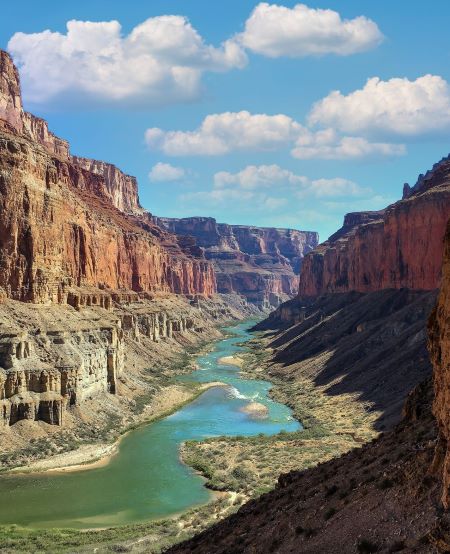 “Entrenched drought and chronic overuse have driven water levels on the Colorado River so low that the Biden administration may be forced to impose massive cuts to water deliveries in seven Western states — a politically perilous move certain to inflame tensions with farmers, tribes and cities. Federal officials have given the states until Aug. 16 to come up with a plan to swiftly conserve as much as a third of the river’s flows, the amount they believe is necessary to keep Lake Powell — a key reservoir along the Arizona-Utah border — from reaching disastrous levels next year. But the pain of the potential solutions is so huge that the states are struggling to reach a deal, according to eight people familiar with the discussions. … ” Read more from Politico here: ‘All bad options’ as Biden administration faces Western water crisis
“Entrenched drought and chronic overuse have driven water levels on the Colorado River so low that the Biden administration may be forced to impose massive cuts to water deliveries in seven Western states — a politically perilous move certain to inflame tensions with farmers, tribes and cities. Federal officials have given the states until Aug. 16 to come up with a plan to swiftly conserve as much as a third of the river’s flows, the amount they believe is necessary to keep Lake Powell — a key reservoir along the Arizona-Utah border — from reaching disastrous levels next year. But the pain of the potential solutions is so huge that the states are struggling to reach a deal, according to eight people familiar with the discussions. … ” Read more from Politico here: ‘All bad options’ as Biden administration faces Western water crisis
Rain pours into some Las Vegas casinos and floods streets in wettest monsoon season in decade
“Heavy rain poured into Las Vegas casinos and flooded streets Thursday night as the wettest monsoon season in a decade helps alleviate the West’s severe drought — but also causes significant damage. Rainwater poured in through a ceiling at Planet Hollywood casino, as seen in video posted by CNN affiliate KTNV, which reported 114 power outages in Clark County affecting some 12,000 people. Rain is possible again Friday, with a slightly higher chance again through the weekend, forecasters said. … ” Read more from ABC 7 here: Rain pours into some Las Vegas casinos and floods streets in wettest monsoon season in decade
Arizona among states facing deadline for plan to cut river water use
“Arizona is one of seven states facing a major challenge from federal officials: to make big cuts to the water we use from the Colorado River. Federal officials gave the Colorado River Basin states a mid-August deadline to come up with a plan. With Lake Mead and Lake Powell at historic lows, for the first time in history, a shortage was declared on the Colorado River in the last year. Arizona’s Family spoke with water policy experts at Arizona State University about the issue. Sarah Porter, the director of the Kyl Center for Water Policy at Arizona State University, says the deadline for the Colorado River Basin states stems from a federal hearing in June. The Bureau of Reclamation commissioner then challenged the states to come up with ways to save between 2 and 4 million acre-feet of water from the system. Just for perspective, Porter says one acre of water is roughly 325,851 gallons. That’s enough water for four efficient, single-family homes for one year, she says. … ” Read more from Arizona Family here: Arizona among states facing deadline for plan to cut river water use
Commentary: 3 ways we can adapt to low Colorado River flows in a drought
David Rosenberg, a professor at Utah State University, writes, “As Colorado River flows and reservoir levels decline, we face a new era of aridity where we live with what the river offers. Experimentation and adaptation can help us navigate these changes. I want to share three ideas I explored over the past two years to manage the river based on flow and storage rather than storage alone. I hope these ideas can contribute towards more sustainable and equitable river management. … ” Read more from Deseret News here: Commentary: 3 ways we can adapt to low Colorado River flows in a drought
Colorado not ready for Colorado River conservation specifics ahead of federal deadline
“Colorado’s top water policy official says the state is not prepared to give specifics when it comes to conserving water from the Colorado River. Colorado Water Conservation Board director Becky Mitchell said in an online event hosted by The Colorado Sun Thursday that cutbacks need to happen first in California, Arizona and Nevada. “Success is dependent on what happens in the Lower Basin,” Mitchell said. “Anything we can do is meaningless unless there are actual cuts to what’s being used in the Lower Basin.” Mitchell’s comments come ahead of a federal deadline on Tuesday. … ” Read more from KUNC here: Colorado not ready for Colorado River conservation specifics ahead of federal deadline
‘Life beyond Lake Powell’: Experts weigh draining Arizona’s iconic lake amid worsening megadrought
“Lake Powell stores an incredible amount of water. It snakes its way through sandstone canyons from Arizona far up into Utah, and has more coastline than the entire West Coast of the United States. But Lake Powell reached its lowest point ever earlier this year and the Bureau of Reclamation is drawing on water from other reservoirs and limiting the amount of water released through Glen Canyon Dam to keep the lake at a safe level. So instead of moving water around, hoping to keep the lake level steady and the power plant running, what if Lake Powell just didn’t exist? ... ” Read the full story at Channel 12 here: ‘Life beyond Lake Powell’: Experts weigh draining Arizona’s iconic lake amid worsening megadrought

